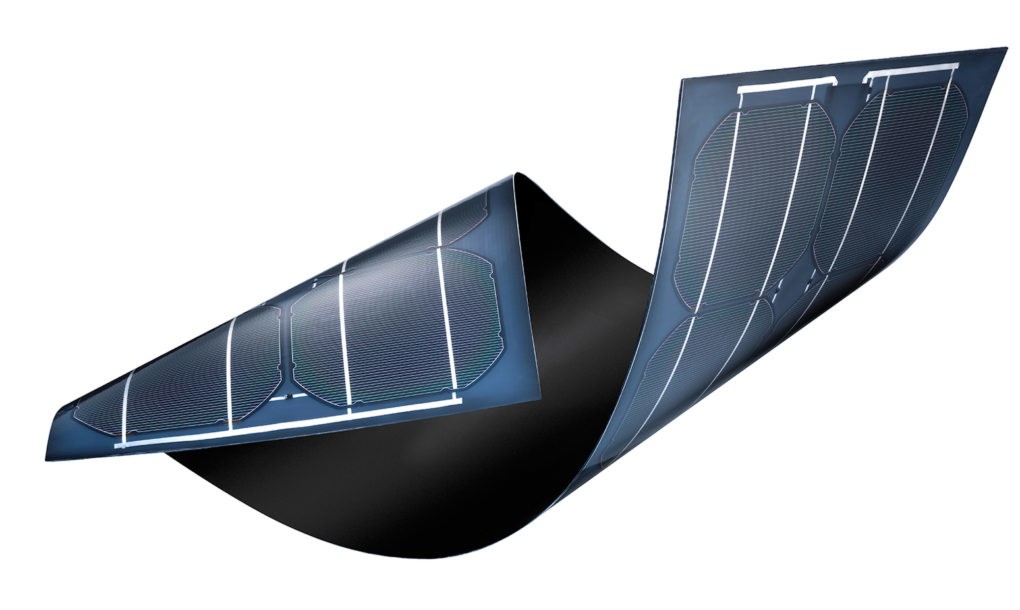As the solar industry grows, so do the inventive solutions for wide-spread adoption of PV technology. However, many such ideas sound good to begin with, but fall short when they actually attempt to enter the market. The jury is still out on Sunflare’s latest offering, but the panels have some intriguing attributes, which could see them succeed where other solar products have failed.
The big unveiling of Sunflare’s solar panels took place at CES 2017 in Las Vegas this week. The nuts and bolts of the panels is that they use CIGS solar cells, which do not use a glass substrate and has thinner layers of semiconductors. This makes them both flexible and significantly lighter than the most common modules found in the industry today.
On top of that, the panels can be stuck onto almost any surface using a special double-sided tape on the back on the panels. This means that they do not need a frame for installation or any building penetration, which means that they can be placed where other solar panels cannot.
“Sunflare has worked for six years to perfect Capture 4, a cell-by-cell manufacturing process with the highest degree of precision and the cleanest environmental footprint,” commented Sunflare CEO Phillip Gao. “This allows us to do what no other manufacturer of CIGS thin-film has done before – mass produce efficient, flexible solar panels.”
The company believes that it is the first to be able to mass produce such panels, and also argues that they are competitive on costs, with total installation costs working out at $1.50 per watt, compared to $1.51 for traditional solar panels, on the U.S. market.
However, there is an air of novelty value about the Sunflare panels, which may turn people’s heads to begin with, but might see the company eventually fail in full market penetration, in an industry which is becoming more competitive by the day, which is driving costs and prices down at all levels of the value chain. It is true that there may be a market for such technology where traditional solar panels are unable to be installed, but it seems unlikely that the sticky, flexible panels will be used for traditional installations any time soon.
This content is protected by copyright and may not be reused. If you want to cooperate with us and would like to reuse some of our content, please contact: editors@pv-magazine.com.



Wow, imagine that integrating these kinds of technological advancements in this era of ours – would be for the betterment of all. That’s why up to this date, I support solar panels and green energy in resolving our environmental crisis! 🙂
These types of panels are the future! and is what everyone will want. Because they could cover you whole roof, and be built into the roofing material.
The writer of the article has it all wrong.
Its abit like ” heavier than air machines will never fly”……………………………………
I find it very telling that I have yet been unable to find info on the % of efficiency these are compared to what is already on the market.
Does anyone know where you could purchase any type of panel from this company?